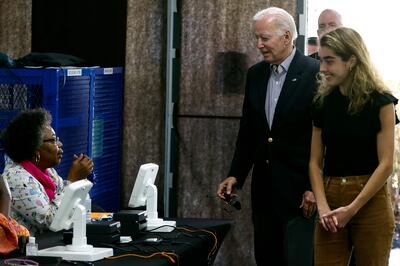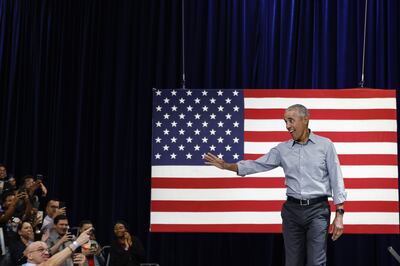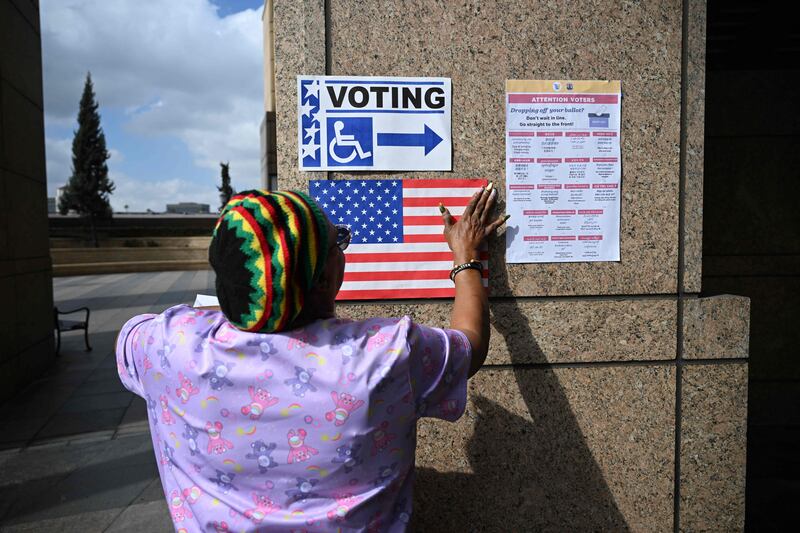By all indications, the US midterm elections will be a nail-biter. Polls suggest that Democrats will have a difficult time maintaining their slim control of both houses of Congress. One factor is the president’s low approval ratings – often a sign that his party would be sailing into the headwinds of a dissatisfied electorate. But there are other issues at work, as well.
In the House of Representatives, Democratic prospects never looked promising. After the decennial redistricting congressional maps were finalised, Republicans came out ahead, with some Democratic seats eliminated and Republicans gaining enough new “safe” Republican districts to give them a structural edge to take control of the House. And so, despite some expressions of Democratic hope or bravado, it is quite unlikely that they will retain leadership in the House.
The Senate is a different story. There are 34 seats being contested – only 13 of them are incumbent Democrats, while 21 are Republicans. Of the 34, 10 are considered vulnerable, five in each party. Because the Senate is evenly split between Democrats and Republicans, all Democrats need to do is break even to maintain their leadership of that body.

Two months ago, several factors pointed to an advantage for Democrats. Their Senate candidates were better, and polls showed that their issues were resonating with voters. Republicans had nominated a few far-right Trump-endorsed people who were “election deniers” and had, to be kind, less than exemplary resumes. It looked promising that Democrats would hold on to at least four of their five vulnerable seats, while being able to flip at least one or two of the currently held Republican seats.
In recent weeks, the situation has changed and polling in all these contests show them tightening to within a few points. What happened?
Hundreds of millions of dollars have been spent by the campaigns, the parties, and outside partisan groups in an effort to paint these elections in the starkest of terms. Both sides have preyed on fear and blame. For Republicans it is: the fear of inflation, blaming Democrats for the high price of gas and food; the fear of crime, blaming Democrats for their criticism of policing; and the fear of out-of-control immigration, blaming Democrats for supporting “open borders” and their acceptance of the undocumented.

For Democrats it is: fear that Republicans will block all paths to a woman’s right to abortion; blaming Republicans for refusing to accept gun control legislation; and fear that American democracy is at risk from the supporters of former President Donald Trump, who not only maintain that the 2020 election was stolen, but also continue to defend the January 6th insurrection and those in a position to do so, are putting in place laws and practices designed to make it harder to vote.
The obscene amounts of money spent advertising these messages nationwide have served to deepen the treacherous partisan divide, making an already polarised political environment even more so. And they have played to the advantage of the Republicans.
Two recent polls explain how this has worked. The first, from NYT/Siena College, showed that “the share of voters citing the economy, inflation, crime, and immigration as the most important problem facing the country increased to 52 per cent, up 14 points from July.” The same poll found that the Democratic “issues of abortion, democracy, or guns dropped to 14 per cent from 26 per cent.”
The second poll was one released by the Democratic Party outlining their strategy focusing on abortion rights as the key issue that would motivate their voters to turn out and win in November. The presentation argued that when looking at each of the groups the poll identified as “key Democratic voters” (that is, young voters, educated women, and minority communities), all supported abortion rights. What the presentation ignored is that the issue of abortion is now seen as an important priority by only 5 per cent of all voters.
These polls explain why Democrats are focused on defending abortion rights and losing ground, while Republicans are railing against the increased cost of living and high crime rates. It also explains why in elections across the country, Republicans are either pulling ahead of Democrats or catching up with them in contests in which they were further behind just few months ago – Republican voters, even if they didn’t approve of their party’s nominees, have decided to come home.
This is not to say that abortion rights, the threat to democracy, or the horrible epidemic of gun violence are not critical issues facing America. What it does say is that, though important, they are not the top issues on the minds of voters. And as my father, a small grocer, would have said: “Listen to your customers or you might lose them to someone who will.” With less than one week to go and most key races too close to call, it will be a nail-biter. An unexpected and unlikely wind blowing in either direction could move the electorate one way or another. That said, at this point it seems probable that Democrats will maintain control of the Senate, while Republicans will assume leadership in the House.
With such an outcome, the good news for Democrats is that the president will continue to have his judges and other appointments confirmed. The bad news for the country is that is about all that will happen. Congress will be paralysed, and we could well see government shutdowns due to lack of agreement on funding. The far right in the Republican Party will challenge their leadership, demanding Benghazi-style hearings on any number of issues and maybe even an attempt at impeachment. It will be two nightmarish years of polarisation and dysfunction leading up to the 2024 national election – when we do it all over again.






